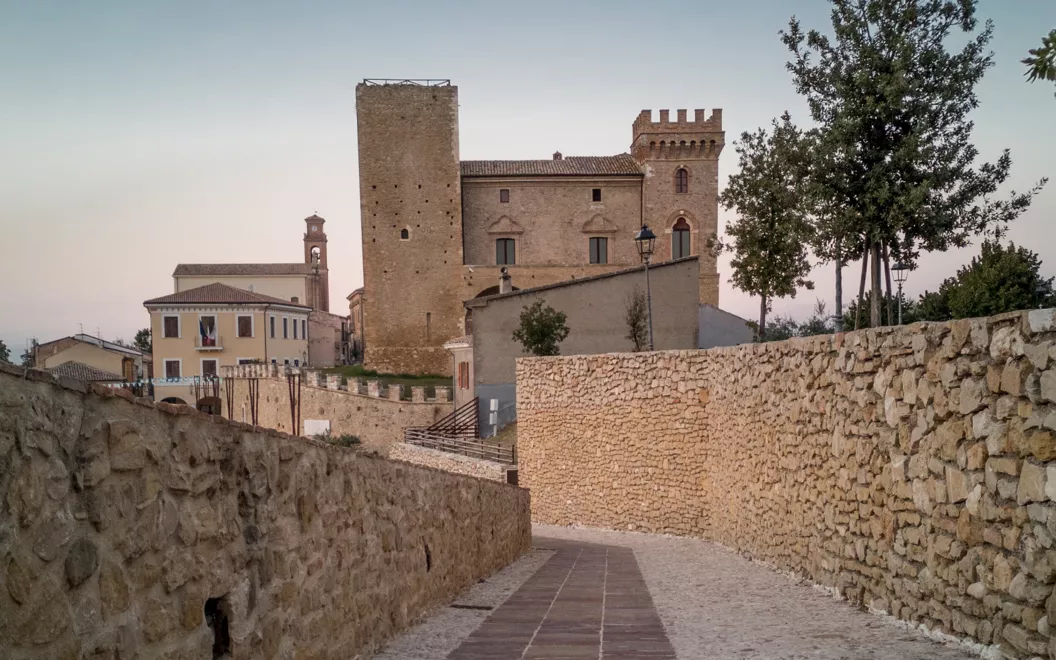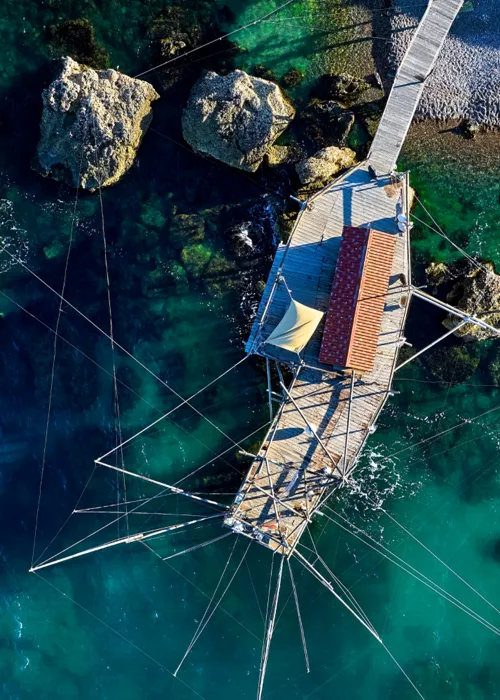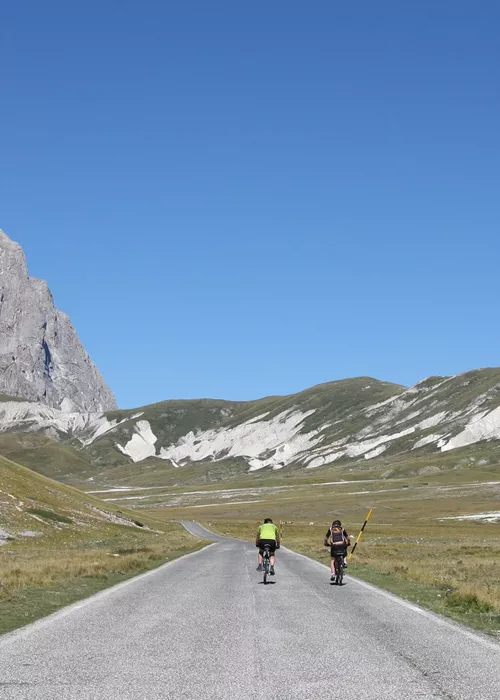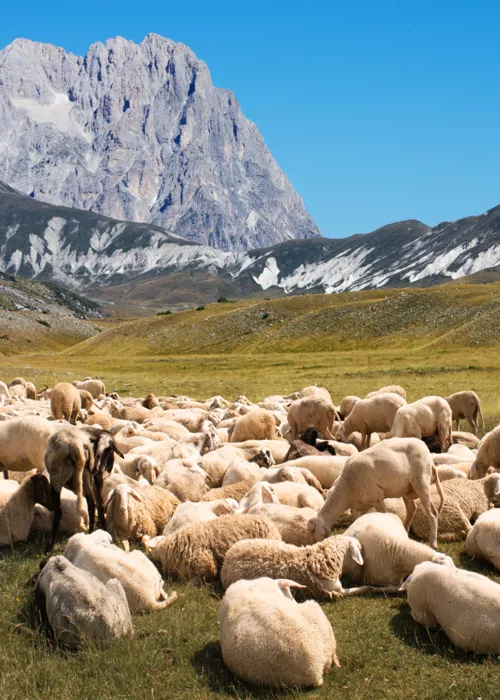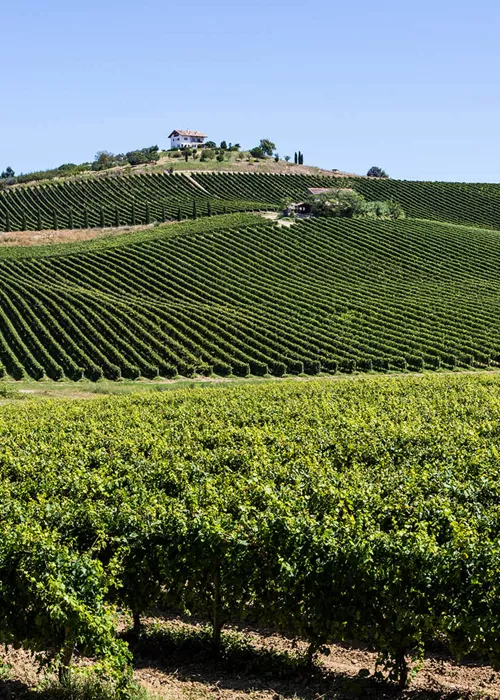From Ortona to Crecchio

Starting from Ortona, and following the SS.538, we reach the small medieval village of Crecchio. Dominated by the size of the Ducal Castle dating back to the 12th century, the village boasts ancient origins, testified by the numerous finds from the Italian and Roman periods, found in the area.
The Castle, meticulously restored in the 1970s, is now home to the Byzantine and Early Medieval Abruzzo Museum.
The elegant fortress, consisting of four buildings with corner towers enclosing a quadrangular courtyard open to the loggia, hosted, on 9 September 1943, the royal family fleeing from German-occupied Rome.
This place is linked to an ancient legend according to which the "Olive Tree Tower", used to decapitate opponents of the ancient owner, was inhabited by ghosts until the new owners, the De Riseis family, decided to plant an olive tree on its top as a sign of peace.
From Crecchio to Orsogna, the village of the talami

Located a stone's throw from the sea and the beautiful Majella, Orsogna is the second stop on our itinerary. Feudo degli Orsini e dei Colonna: this village boasts a privileged position and preserves the vestiges of its history. The Baroque church of San Nicola, which preserves a cross attributable to Nicola da Guardiagrele, and the Torre di Bene are also worth a visit.
Among the many traditions of Orsogna, the oldest and most heartfelt is the sacred Representation of the Talami, a scenic parade of seven floats set up with sacred effigies inspired by the Bible, which cross the historic centre on the Tuesday after Easter.
Located between the Maiella National Park and the Annunziata River Park, Orsogna enjoys a territory rich in biodiversity where rare orchids, primroses and cyclamen stand out in spring.
In the nearby river park is the homonymous Convent of the Franciscan friars, founded in 1448 by San Giovanni da Capestrano: almost intact to this day and recently renovated, the complex, which enjoys great artistic and architectural importance, preserves 16th century frescoes.
From Orsogna to Guardiagrele

Guardiagrele enjoys a beautiful position at the foot of La Maiella. The village, one of the most beautiful in Italy, has medieval origins, and has always had a strong craft vocation, still flourishing today in the fields of goldsmithing, copper and wrought iron, with Nicola da Guardiagrele among its most distinguished goldsmiths. The centre is full of interesting churches but its jewel is the Cathedral of Santa Maria Maggiore, built on several occasions between the 12th and 18th centuries with the white stone of La Maiella. The feature that makes it original is the central square tower that acts as both an entrance and a bell tower. The interior is spacious with a wooden roof, numerous stuccoes and fine furnishings. The large portico is part of the complex, where you can admire a 1473 fresco by Andrea De Litio, the church of San Rocco and the Duomo Museum. Not to be missed is a visit to its museums: the Duomo Museum, the Museum of Artistic Crafts, the Archaeological Museum and the Museum of Costume and Tradition.
From Guardiagrele to Fara San Martino

In the heart of the Maiella National Park, lies Fara San Martino, a village of Lombard origins. Benedictine monks colonised the area between the 9th and 10th centuries and founded the ancient monastery of San Martino in Valle in 1044. Wandering through the famous gorges, you can see the remains of the ancient monastery and the hermitage about two hours' walk away. In the centre, visit the parish church of San Remigio, which houses a 17th-century painting by Tanzio da Varallo, a follower of Caravaggio. The town is world-famous for the production of excellent quality pasta, thanks to the water that flows from the springs of the Verde river.
From Fara San Martino to Lama dei Peligni

Nestled in a picturesque natural setting, at the foot of the eastern Majella mountain range, we find Lama dei Peligni, a small village that boasts prehistoric origins, as evidenced by a series of cave paintings found in the area's caves and the remains of a Neolithic-era village. In Contrada Fonterossi, right near the Neolithic site, the so-called Man of Maiella, the human remains of a prehistoric burial site dating back to 7000-5000 B.C., were found in the early 20th century. In the historical centre, the parish church of Ss. Nicola and Clemente overlooking the scenic Piazza Umberto I is worth a visit, while in the upper part of the town is the church of Maria SS. Della Misericordia (or S. Antonio convent). At the Majella National Park visitor centre, you can admire the "M. Locati" archaeological nature museum and the "M. Tenore" botanical garden, while not far away is the Abruzzo chamois wildlife area, where you can also observe this animal up close. We resumed our journey and about 3 km from the village we found a cable car, operating in the summer, which accompanied us to the entrance of the impressive Cavallone caves, among the highest in Europe!
From Lama dei Peligni to Palena

A few kilometres from Lama dei Peligni, you can visit Palena, a village of Italic origin. The ducal castle, built on a cliff around the year 1000, houses the Alto Aventino Geopaleontological Museum. In the centre is the Church of Our Lady of the Rosary, unusual for its Greek cross plan. Also in Palena, we find the Marsican Bear Museum and the Fauna Area, home to three specimens of European brown bear: Caterina, Iris and Margherita. Thanks to a user-friendly trail, it is possible to spot the bears, learn about their stories, biological characteristics and life habits of the placid plantigrade.

